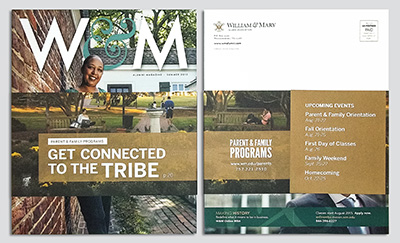By Betsy Robertson
National Account Executive/Lane Press
Despite higher education’s current obsession with electronic communication, recent college graduates are still avid readers of printed alumni magazines. The stats don’t lie: According to the Council for the Advancement and Support of Education, 69 percent of alumni under age 25 say their alma mater’s magazine strengthens their personal connection to the institution. That percentage increases to 80 percent among graduates between ages 25 and 34. For engaging young grads, the stalwart alumni magazine remains one of the most successful tools in the communications arsenal.
At the same time, new graduates represent one of the most confounding audiences for higher education fundraisers, alumni professionals, and marketing experts. Having just earned their diplomas, fledgling alumni typically face the prospect of paying off student-loan debt, finding starter jobs or enrolling in graduate studies, and establishing households independent of their parents. As part of the generation dubbed “millennials,” young alumni are busy figuring out who they are as adults while juggling relationships and defining their post-college goals. Amidst these changes, millennials tend to put their alma mater on the back burner. Less than half of young alumni make contributions to their college or university, according to a 2014 report by the research firm Achieve and The Chronicle of Philanthropy. Most cite lack of money as the reason.
Alumni and development professionals across the country have devised creative giving programs, career-focused events, and interesting volunteer opportunities designed to attract new graduates in hopes their efforts will pay off later with major gifts as these millennials reach their peak earning years. Unfortunately, the experts tasked with creating targeted messaging for this critical group—namely those in the marketing and communications office—haven’t fully taken advantage of what their most powerful piece of direct mail … and yes, I’m referring to the alumni magazine … can do to help.
As I meet with higher education editors and designers in communications offices across the country, inevitably we start brainstorming ways to turn the alumni magazine into a true strategic marketing tool. With that goal in mind, here are three inexpensive ways to add targeted messaging to your book that is sure to grab young grads’ attention:
- Wow young graduates with a different, cool cover. Who says every reader has to experience the same magazine cover? Simply design a separate cover to grab the attention of younger alumni (by teasing a profile of a recent graduate or featuring an edgy illustration … the creative possibilities are infinite) and ask your advancement services office to divide the mailing list into two files, one containing alumni below age 30 (or wherever you’d like to set the dividing line). For a nominal cost (one plate change on press), you’ve just created a demographically versioned magazine you can use to tease content in which your newest alumni are most likely interested. TV Guide, Southern Living, and other consumer magazines have been creating targeted versions for years to provide a diverse menu of advertising opportunities as well as promote content relevant to specific types of readers.
-

A tastefully designed belly band on the summer 2015 issue of William & Mary Alumni Magazine highlights an alumni-focused article on the front side and promotes upcoming events on the back.
Add a belly band that promotes young alumni programs. A belly band is a horizontal piece of paper that is wrapped around a magazine and secured with a wafer tab or glue dot. Because of its prominent position and the fact that a reader must remove it before opening the magazine, a belly band draws readers’ attention from the moment they pull it out of the mailbox. Belly bands are a great place to promote events geared toward young alumni, including networking receptions, volunteer and service opportunities, resume-building workshops, and giving challenges. And there’s no need to waste money by including a band on every magazine—keep costs low by sending only to alumni who have graduated within the past 10 years.
- Insert a fun give-away. I don’t know of any alumnus who doesn’t love free stuff, or any alumni affairs office that doesn’t have plenty of collegiate merchandise to pass out at reunions and other events. It’s easy to apply and adapt the charm and branding benefits of promotional tchotchkes to the production of the university magazine. Why not capture the attention of young alumni with a pair of disposable sunglasses in your school colors and a rallying call to don them at an upcoming tailgating event? How about inserting a CD of music performed by the college’s marching band or a pocket calendar that includes the dates for the coming year’s class reunion, Homecoming, and local club events? As long as the product is flat and lightweight, your printer can probably insert it into the alumni book, providing an opportunity for targeted messaging designed to support young alumni programs.
Why spend thousands on a discrete direct mail piece when you can get into young alumni’s homes and hands using an existing mailing? With a little creativity, the alumni magazine can pull even more of its weight as part of the marketing communications mix.
. . . . .
Join us on Twitter and LinkedIn to share your thoughts & opinions.


